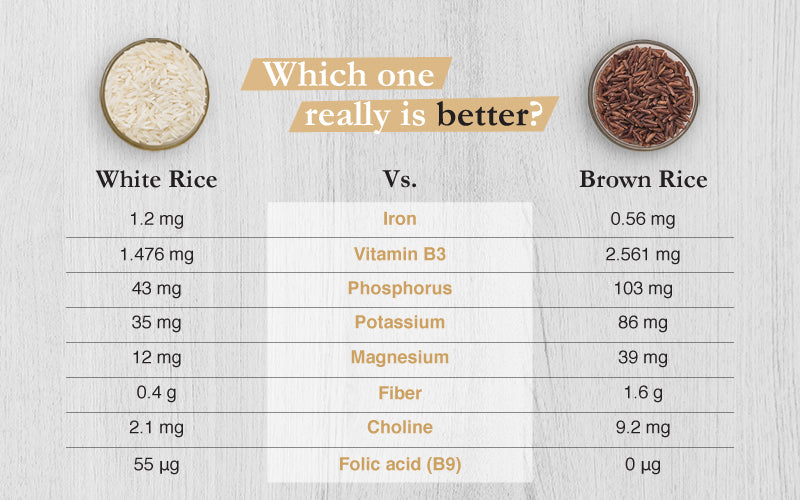There are lots of different rice varieties. Each type has its own characteristics and different nutritional values than the others. White rice is familiar to everyone, and is extremely popular globally, while brown rice is often put against white rice and is said to be healthier. Red rice is also becoming increasingly popular, but how does it differ from white and brown rice? Let’s learn about the different types of rice together, and decide which one is the best for us.
Overview
1. What is the origin of rice?
2. White and brown rice - which one really is better?
3. Why is brown rice better than white rice for diabetes control?
4. What is red rice?
1. What is the origin of rice?
Rice is a predominant food for half the world’s populations, and its cultivation dates back to almost 7,000 years ago in Southeast Asia. It is a symbol, and is used in ceremonies and offerings. Rice is one of the most important food crops in the world and is also an important part of Asian culture.
Vietnam is one of the world’s richest agricultural regions and is the second-largest exporter worldwide and the world’s seventh-largest consumer of rice. Rice has become an essential part of the Vietnamese daily life, with eight out of ten Vietnamese living in rural areas making a living by growing rice.
2. White and brown rice - which one really is better?
White and brown rice are the two most popular types of rice at the moment, and while both are made from the same, base grain, what happens after is different. Brown rice is the entire rice grain, still intact. It still has the fibre-rich bran, the nutrient=pack germ and the carbohydrate-rich endosperm, which is the white rice grain.
White rice is stripped of the bran and the germ, leaving just the endosperm. It is then processed to improve taste and cooking properties, as well as to extend shelf life. White rice can be considered empty carbs because it is stripped of its main sources of nutrients. However, in Vietnam and many other countries, white rice is typically enriched with added nutrients, such as iron and different types of vitamin B like folic acid, thiamine and more.
This table shows how the two types of rice compare nutritionally when cooked.

3. Why is brown rice better than white rice for diabetes control?
Firstly, we need to consider the glycemic index of the rice, which is a number given to foods that represent the effect the food has on your blood’s glucose levels. The higher the GI number, the faster the food will be absorbed and digested and the faster and higher your blood glucose levels will raise.
According to Harvard Health Publishing, the glycemic index of white rice is G!-73, whereas brown rice has the glycemic index of GI-68. Because brown rice has a lower GI, it means it is slowly absorbed and digested into the body, meaning a lower and slower rise in blood glucose levels, making it ideal for people with diabetes or prediabetes.
4. What is red rice?
Red rice has become more popular and widely available over the last few years, and is arguably the most nutritious rice variety to eat.
Red rice is slightly different because it contains a compound called anthocyanins. Anthocyanin is also seen in other red-purple fruits and vegetables such as blueberries and red cabbages. Anthocyanins have plenty of reported health benefits too, such as being able to lower blood pressure, and being able to prevent cancer or tumor cell growth.
You can buy red rice with or without the hull (the outer coating of the grain). Red rice has a similar calorie content to other rices; 100g of uncooked red rice, there are about 360 calories. However, fibre content is a lot higher in red rice, with it being 6.2g per 100g.
Like all rice, red rice is rich in carbs and protein as well as fibre and B vitamins. Red rice also has a lower glycemic index, meaning it takes longer for it to be digested and turned into sugar in your body, meaning that it is suitable for those with diabetes.
Above, is all you need to know about rice. Now, you can easily choose the type of rice that fits your lifestyle and your health concerns.

